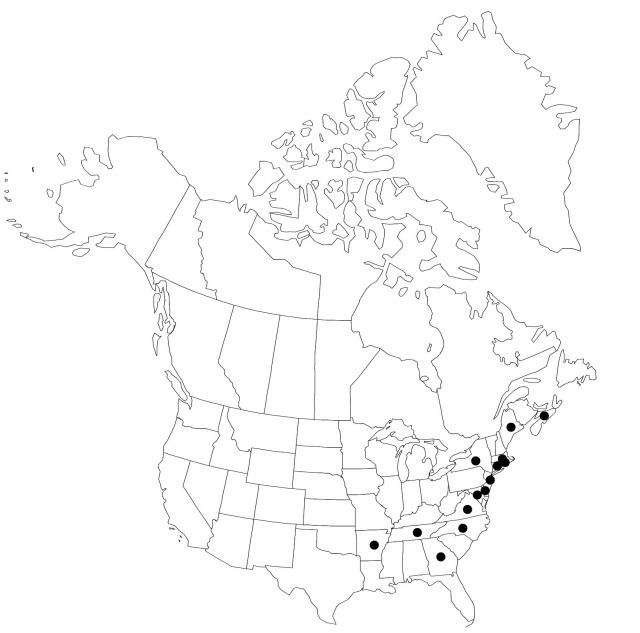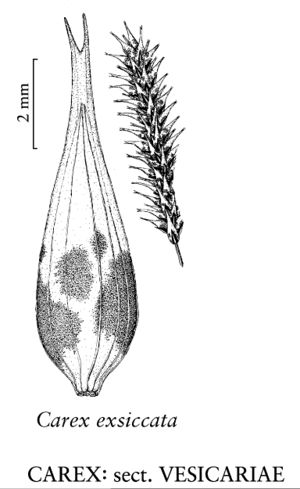Difference between revisions of "Carex bullata"
Sp. Pl. 4(1): 309. 1805.
FNA>Volume Importer |
FNA>Volume Importer |
(No difference)
| |
Revision as of 19:10, 24 September 2019
Plants cespitose; rhizomes long. Culms trigonous in cross section, 30–85 cm, scabrous angled distally. Leaves: basal sheaths reddish purple; ligules as wide as to longer than wide; blades light green, glabrous, flat to W-shaped, widest leaves 1.8–4.3(–5) mm wide. Inflorescences 8–30 cm; proximal bract (3–)9–35 cm, mostly equaling or exceeding inflorescence; proximal 1–3 spikes pistillate, erect or, sometimes, the proximal spreading, cylindric; terminal 1–3 spikes staminate. Pistillate scales narrowly ovate, 3.5–5.2 × 1.1–2.1 mm, shorter than perigynia, margins entire, apex obtuse to acute, awnless. Perigynia ascending to spreading, often green or straw colored, strongly 9–12-veined, veins running into beak, lance-ovate, 5.9–10.2 × 2.4–3.3 mm, apex contracted; beak 2.4–4.2(–4.8) mm, bidentate, finely scabrous at least near tip and on teeth, teeth straight, to 0.5–1.4 mm. Stigmas 3. Achenes brown, symmetric, not indented, trigonous, smooth.
Phenology: Fruiting May–Aug.
Habitat: Acidic soil of bogs and boggy meadows, open swamp forests, peaty or sandy pond and lakeshores, seeps
Elevation: 0–1100 m
Distribution

N.S., Ark., Conn., Del., Ga., Maine, Md., Mass., N.J., N.Y., N.C., R.I., Tenn., Va.
Discussion
Selected References
None.
